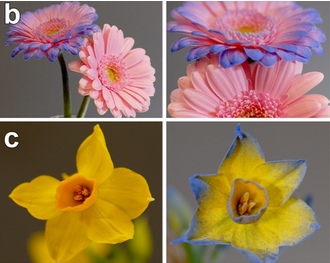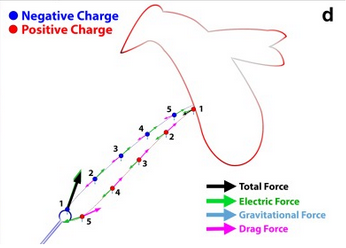Function on Pollen
Transfer
One way to visualize the electric field and its negative charge on flowers is by dusting them with electrostatically charged colored powder. The sharp edges of the petals and the pointed parts of the flowers show the highest charge density and highest electric charge as they are coated with the most powder. This is a great way to envision how the electric field operates in flowers.

As a bee moves closer to the flower, the electrostatic forces between the bee and the flower grow increasingly larger. This is very important for understanding pollen transfer from flower to bee, and from bee to flower.
If we think about the transfer of two pollen grains, we can break it down into four forces. The electric force, the gravitational force, the drag force, and the total force. The negative charge on the flower acts as an attractive force for the pollen on the bee. It travels with an electric force towards the flower, with an opposing drag force in the opposite direction. The gravitational force, of course, acts to pull the pollen grain down to the earth, but canít counteract the attraction from the flower. In the opposite order, pollen from the flower is attracted by the positive charge on the bee, and travels towards it with an electric force, which is opposed by the drag force in the opposite direction. The gravitational force plays a role here as well. During pollination, all of the pollen grains will either be transferred from the bee to the flower, or from the flower to the bee, with no stray grains.

|